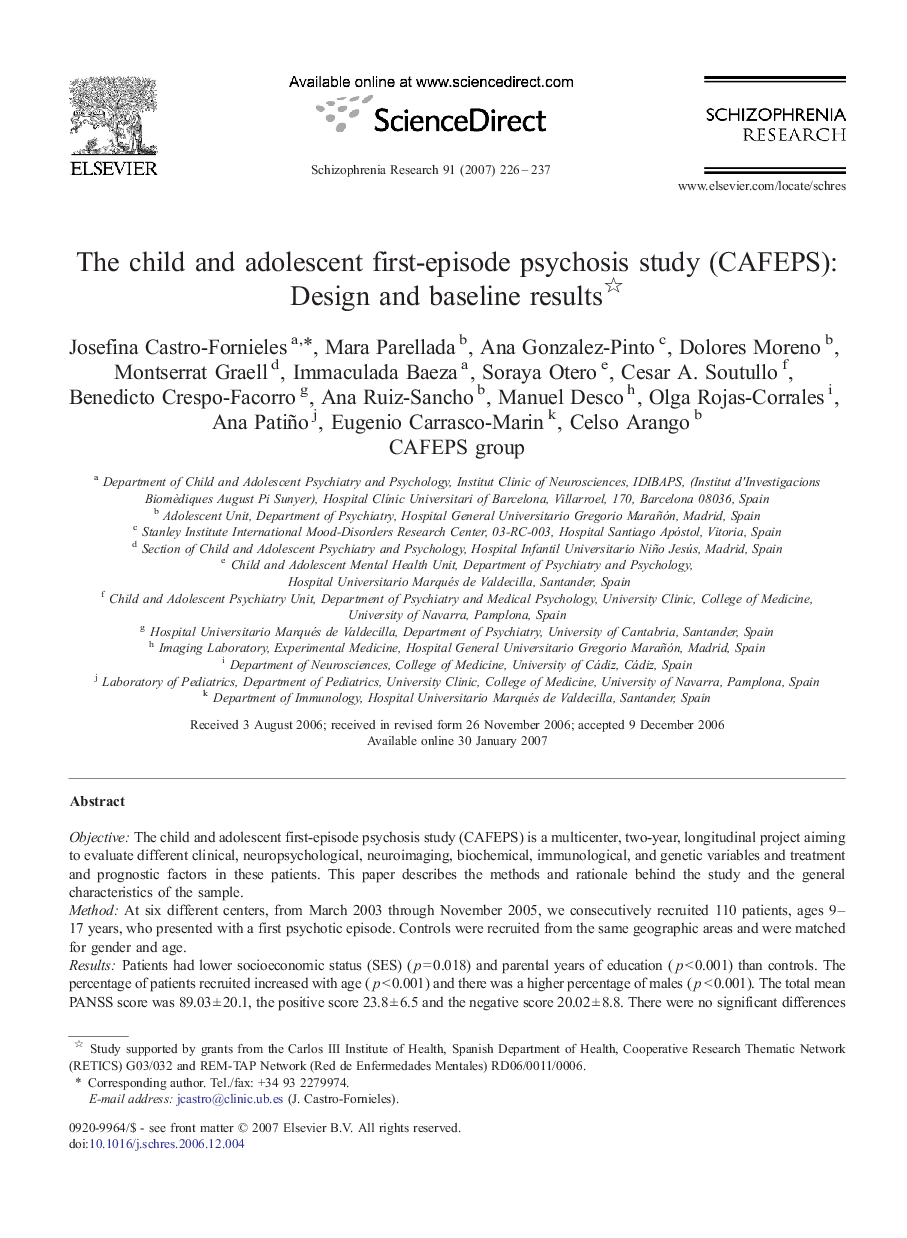| کد مقاله | کد نشریه | سال انتشار | مقاله انگلیسی | نسخه تمام متن |
|---|---|---|---|---|
| 342044 | 548584 | 2007 | 12 صفحه PDF | دانلود رایگان |

ObjectiveThe child and adolescent first-episode psychosis study (CAFEPS) is a multicenter, two-year, longitudinal project aiming to evaluate different clinical, neuropsychological, neuroimaging, biochemical, immunological, and genetic variables and treatment and prognostic factors in these patients. This paper describes the methods and rationale behind the study and the general characteristics of the sample.MethodAt six different centers, from March 2003 through November 2005, we consecutively recruited 110 patients, ages 9–17 years, who presented with a first psychotic episode. Controls were recruited from the same geographic areas and were matched for gender and age.ResultsPatients had lower socioeconomic status (SES) (p = 0.018) and parental years of education (p < 0.001) than controls. The percentage of patients recruited increased with age (p < 0.001) and there was a higher percentage of males (p < 0.001). The total mean PANSS score was 89.03 ± 20.1, the positive score 23.8 ± 6.5 and the negative score 20.02 ± 8.8. There were no significant differences between the genders with respect to age, parental years of education, SES, or scores in premorbid adjustment or general functioning. There were statistically significant positive correlations between age and positive symptoms and between all PANSS subscales and the Disability Assessment Schedule, and negative correlations between positive symptoms and global functioning. Diagnoses after the baseline evaluation were: psychotic disorder not otherwise specified (NOS) 35.5%, schizophreniform disorder 24.5%, mood disorder with psychotic symptoms 22.7%, schizophrenia 10%, schizoaffective disorder 2.7%, and other psychotic disorders 4.5%. Patients had worse premorbid adjustment (p < 0.001) and global functioning (p < 0.001) than controls after controlling for SES.ConclusionsInfancy and adolescence adjustment and global functioning are lower in children and adolescents with psychotic disorders than in controls, severity of symptoms are related to general disability, and the most frequent diagnoses are psychotic disorders NOS.
Journal: Schizophrenia Research - Volume 91, Issues 1–3, March 2007, Pages 226–237